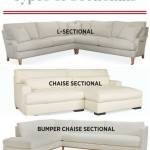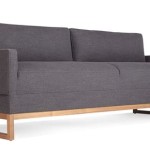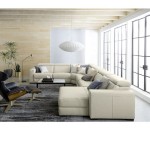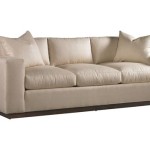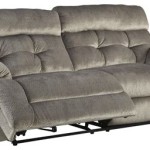Artwork Over Sofa Ideas: Enhancing Your Living Space
The space above a sofa presents a prime opportunity to elevate the aesthetic appeal of a living room. Selecting the appropriate artwork for this area is a crucial aspect of interior design, contributing significantly to the room's overall ambiance and reflecting the homeowner's personal style. This article explores various artwork options suitable for placement above a sofa, offering insights into size, style, arrangement, and practical considerations.
The selection process should initially consider the sofa’s size and style. A large sectional sofa necessitates a different approach compared to a smaller loveseat. Similarly, a modern, minimalist sofa calls for artwork that complements its clean lines, while a more traditional sofa can accommodate a wider range of artistic styles. The existing color palette of the room, including wall colors and furniture fabrics, also plays a pivotal role in determining the most suitable artwork. Cohesive color schemes create a sense of harmony, while strategically placed contrasting colors can introduce visual interest and dynamism.
Ultimately, the aim is to create a focal point that enhances the room's decor without overwhelming the space. Careful consideration of these factors will result in a well-curated and visually appealing living room.
Determining the Right Size and Scale
The size and scale of the artwork are fundamental to achieving a balanced and aesthetically pleasing arrangement above a sofa. Selecting artwork that is disproportionately small can appear insignificant and lost, while artwork that is excessively large can overwhelm the space and create a cluttered feeling. As a general guideline, the artwork should occupy approximately two-thirds to three-quarters of the sofa's width. This proportion creates a visual connection between the sofa and the artwork, resulting in a cohesive and harmonious composition.
For example, if a sofa measures 8 feet wide, the artwork should ideally span between 5.3 and 6 feet. This can be achieved with a single large piece or a carefully arranged gallery wall. When considering a single piece, the height should be proportionate to the width, ensuring that it does not appear either too tall or too short in relation to the sofa. The vertical space between the top of the sofa and the bottom of the artwork should typically be between 6 and 12 inches. This gap provides sufficient breathing room and prevents the artwork from feeling visually cramped.
When opting for a gallery wall, the collective size of the arrangement should still adhere to the two-thirds to three-quarters rule. The layout of the gallery wall should also be carefully planned to ensure a balanced and visually appealing composition. This includes considering the size, shape, and spacing of the individual pieces within the arrangement. Regardless of whether a single piece or a gallery wall is chosen, prioritizing the appropriate size and scale is crucial for achieving a visually pleasing and balanced result.
Exploring Different Artwork Styles and Mediums
The choice of artwork style and medium is a crucial element in defining the overall aesthetic of a living room. The style should complement the existing decor and reflect the homeowner's personal taste. A wide range of options are available, from traditional paintings and prints to contemporary photography and mixed media pieces. Each style and medium offers a unique visual texture and can contribute to the room's ambiance in distinct ways.
Traditional paintings, such as landscapes, portraits, and still lifes, can add a sense of timeless elegance to a living room. Oil paintings offer rich textures and vibrant colors, while watercolor paintings provide a softer and more delicate aesthetic. Prints, including lithographs, serigraphs, and giclée prints, offer a more affordable alternative to original paintings and can be a great way to introduce a variety of styles and artists into the space. Abstract art, with its emphasis on form, color, and texture, can add a modern and sophisticated touch to a living room. Abstract paintings and prints can create a sense of dynamism and visual interest, while also allowing for a more personal and subjective interpretation.
Photography, both black and white and color, can be a powerful medium for capturing emotions and conveying a specific mood. Landscape photography can bring the beauty of the natural world into the living room, while portrait photography can add a personal and intimate touch. Mixed media art, which combines different materials and techniques, offers a unique and eclectic aesthetic. Mixed media pieces can incorporate elements such as collage, found objects, and sculptural components, creating a visually rich and textured artwork. The selection of artwork style and medium should be guided by the homeowner's personal preferences and the overall design goals of the living room.
Practical Considerations: Hanging and Lighting
Proper hanging and lighting are crucial aspects of showcasing artwork effectively above a sofa. The correct hanging height ensures that the artwork is viewed at an optimal level, while appropriate lighting enhances its colors and textures, creating a more visually appealing presentation. Neglecting these practical considerations can diminish the impact of even the most beautiful artwork.
As previously mentioned, the vertical space between the top of the sofa and the bottom of the artwork should generally be between 6 and 12 inches. This distance allows for sufficient breathing room and prevents the artwork from feeling visually cramped. When hanging multiple pieces, it is important to maintain consistent spacing between each piece to create a cohesive and balanced arrangement. The spacing should typically be between 2 and 4 inches, depending on the size and style of the artwork. Using a level is essential to ensure that the artwork is hung straight, preventing any visual distractions. It is also important to use appropriate hanging hardware that is capable of supporting the weight of the artwork. For heavier pieces, it may be necessary to use wall anchors or professional installation services.
Lighting plays a crucial role in highlighting the artwork and enhancing its visual impact. Track lighting or individual spotlights can be strategically positioned to illuminate the artwork, drawing attention to its colors, textures, and details. The angle of the light should be adjusted to minimize glare and shadows. Using LED bulbs is recommended, as they provide bright and energy-efficient lighting while also minimizing heat damage to the artwork. Consider the ambient light in the room when selecting lighting for the artwork. In a room with ample natural light, softer and more diffused lighting may be sufficient. However, in a room with limited natural light, brighter and more focused lighting may be necessary to adequately illuminate the artwork. Careful consideration of these practical factors will ensure that the artwork is displayed to its full potential, enhancing the overall ambiance of the living room.
Beyond the aforementioned points, the frame of the artwork also plays a significant role in its overall presentation. The frame should complement the artwork's style and the room's decor. A simple, minimalist frame can be a good choice for contemporary artwork, while a more ornate frame may be suitable for traditional pieces. The color of the frame should also be considered; a neutral frame can blend seamlessly with the surrounding decor, while a bold-colored frame can add a pop of visual interest. The matting, if used, should also be carefully chosen to enhance the artwork and create a visual separation between the artwork and the frame. The width of the matting should be proportionate to the size of the artwork. Ultimately, the frame and matting should work together to enhance the artwork and create a cohesive and visually appealing presentation.
Furthermore, consider the potential for incorporating texture and dimension beyond traditional framed artwork. Three-dimensional pieces, such as sculptures or relief art, can add depth and visual interest to the space above the sofa. These pieces can be particularly effective in minimalist or contemporary settings, where they can serve as a focal point and add a tactile element to the room. Tapestries or woven wall hangings can also introduce texture and warmth, creating a cozy and inviting atmosphere. These options can be particularly suitable for bohemian or eclectic design styles. The key is to choose pieces that complement the existing decor and reflect the homeowner's personal style. By incorporating texture and dimension, the space above the sofa can be transformed into a visually engaging and dynamic focal point.
Finally, remember the importance of personal expression. While adherence to design principles is valuable, the ultimate goal is to create a living space that reflects the homeowner's personality and preferences. The artwork above the sofa should be a reflection of their individual style and interests. Don't be afraid to experiment with different styles, mediums, and arrangements until you find something that truly resonates. Consider incorporating pieces that have personal significance, such as family photographs or artwork created by loved ones. These pieces can add a sense of warmth and authenticity to the space. Ultimately, the most successful artwork arrangement is one that is both visually appealing and personally meaningful.

How To Perfectly Style The Blank Wall Behind Your Sofa Zhush
Ideas For That Empty Wall Behind The Sofa Kelly Bernier Designs

Elegant Dressing Stylish Dining Living With Art Interior Design What I M Reading Right Now For High Impact Above The Sofa Doreen Chambers Interiors
Ideas For That Empty Wall Behind The Sofa Kelly Bernier Designs

20 Ideas For What To Put Behind The Living Room Sofa

Design Dilemma What To Hang On The Big Wall Behind Your Sofa Emily A Clark Decor Family Room Walls Home Living

8 Extraordinary Ways To Decorate The Wall Behind A Sofa

What To Hang On The Wall Over Your Sofa Closetful Of Clothes

A Guide For Knowing What To Hang Above Your Sofa And How Execute

Artwork Above Sofa Design Ideas


